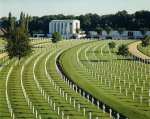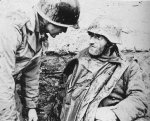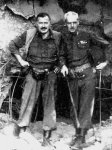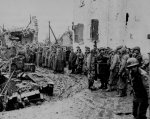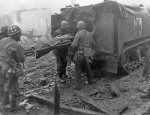If you look at the last 12th Army group sitmap (5 Dec 44, I think), the U.S. Army intel folks were still tracking forces that would be used in Wacht-am-Rhein as being elsewhere.December 11, 1944: ... The last of three hundred thousand Germans who will fight in the Ardennes Offensive arrive just a few miles from the Allied front lines. By evening (using straw on the frozen and rutted roads to muffle their sound) over 2,800 new armored vehicles are assembled all along the so-called ‘Ghost Front’. The vehicles and other supplies are heavily camouflaged with fir branches and parked beneath the tall pines to avoid detection from the air. The German buildup in the Ardennes is complete. Hitler moves to a new headquarters behind the Siegfried Line, near the castle of Ziegenberg, from which he direct operations. The date for the attack is set for December 16th.
Although General Bradley (commanding general of ground forces in the sector) and General Eisenhower (Allied supreme commander) concerned about the weakness of their position in the Ardennes, they believe the Germans are too beaten down and lack sufficient manpower and supplies to launch an effective counterattack. ... Hitler holds a meeting with top German military commanders at the Adlerhorst headquarters in Wetterau, Germany, stressing the importance of the upcoming Ardennes Offensive.
The 1st SS, 2nd SS, 9th SS, 10th SS, 12 SS, 9th and 116th Panzer divisions were listed as being around Aachen/Huertgen, and the 21st Panzer, Panzer Lehr were assumed to be in Lorraine when obviously, they were, by this point, in their staging areas for Wacht-am-Rhein.
There is an art to intelligence assessment. Latency matters. If you see (via captured documents, vehicle markings, talkative POWs) elements of the 2nd Panzer in the town of Schmidt on 1 December, does that mean the entire division was there or just that one element? And on December 8th, can you still assume the division is still there or have they moved on?
There is a saying in the army: every operation is either an operational success or an intel failure. If the operation works, it was because of the great planning and the courage and skill of the operators. If it failed, the intel guys screwed up. (Intel guys love that saying, by the way).



